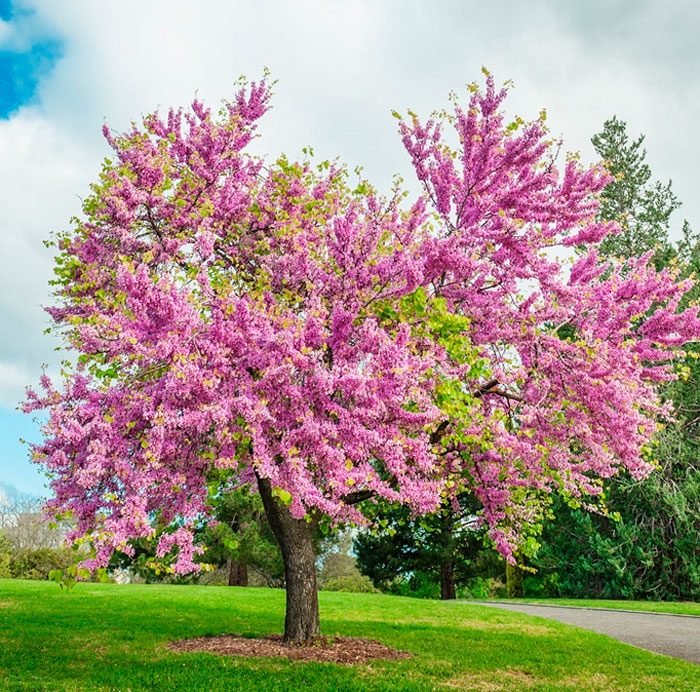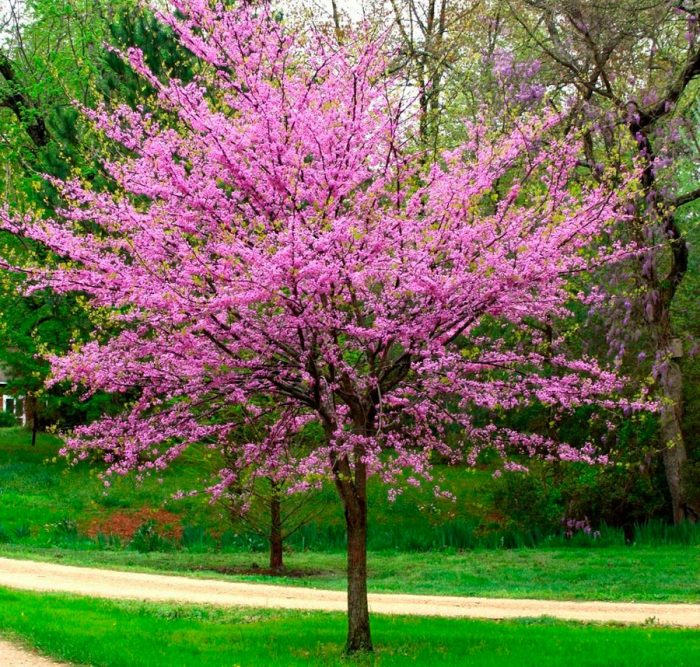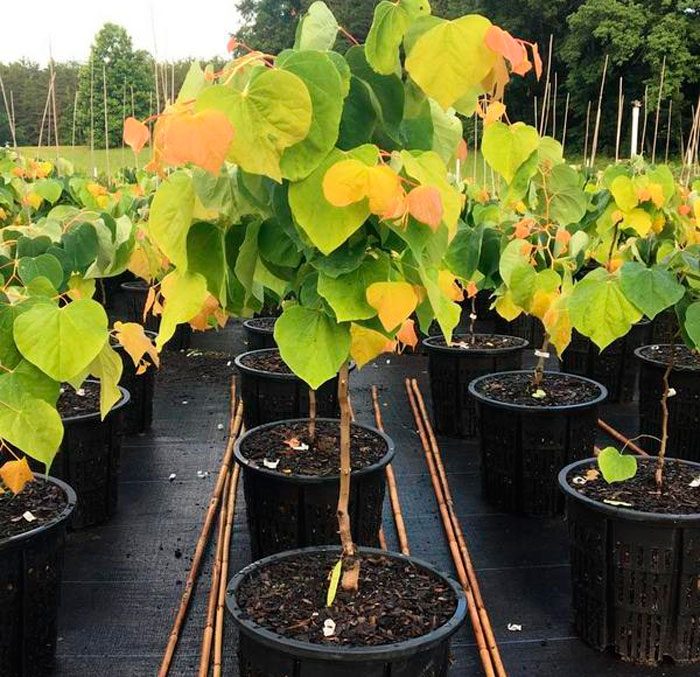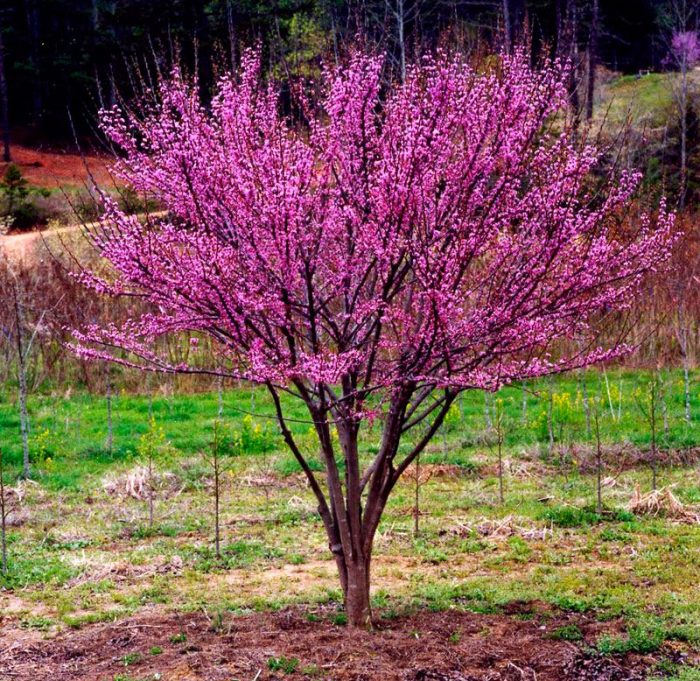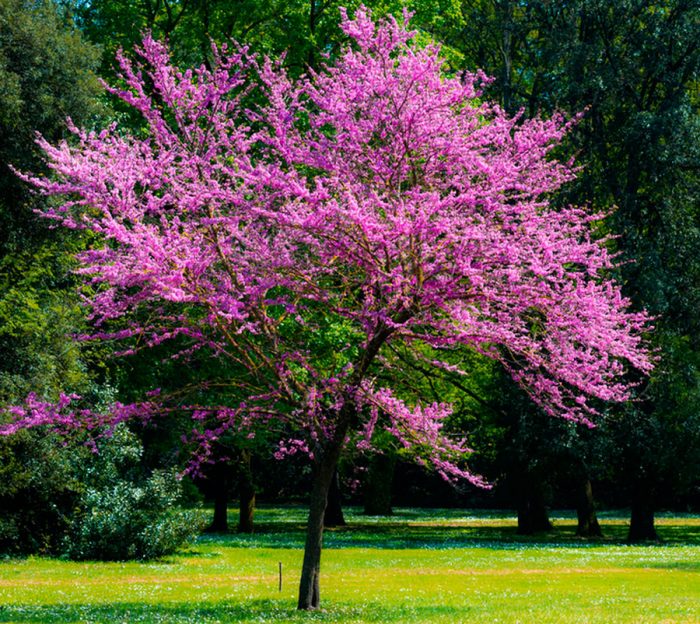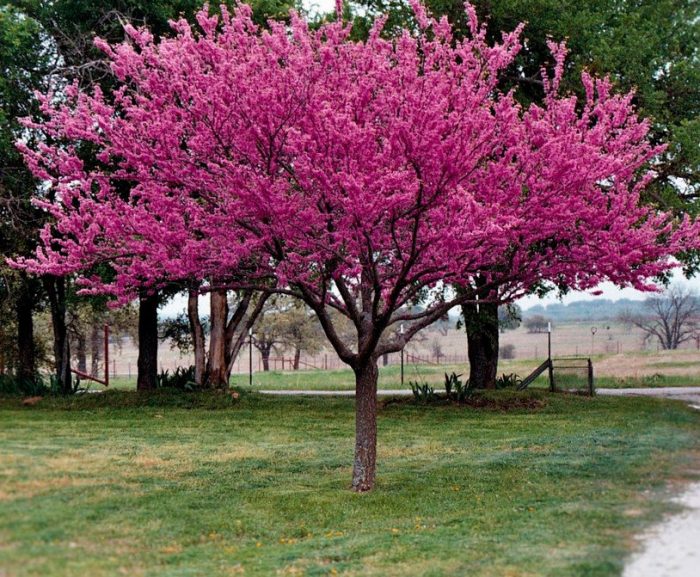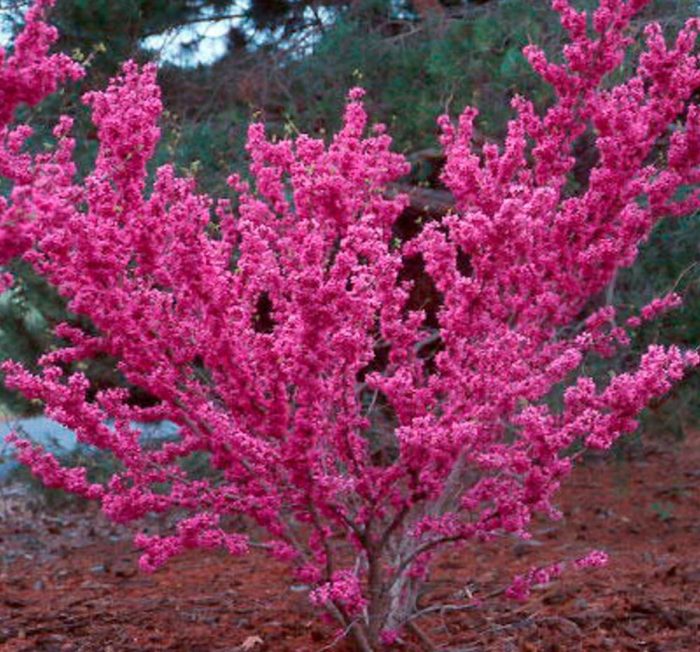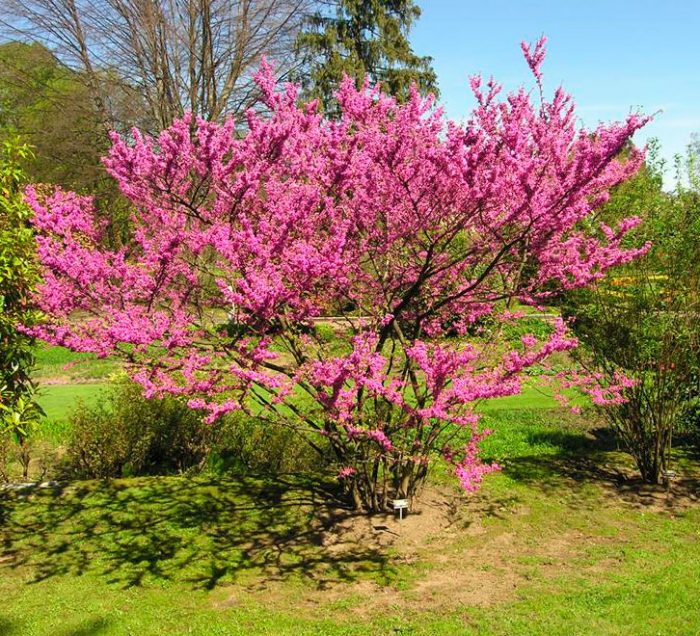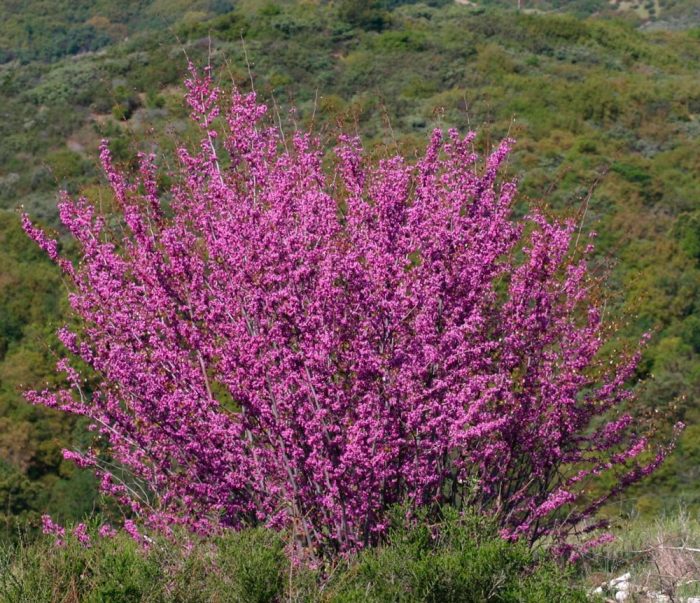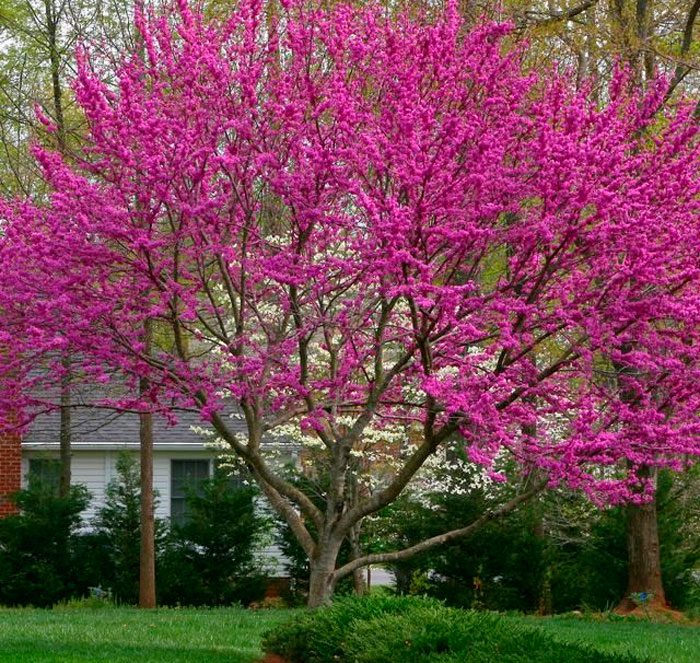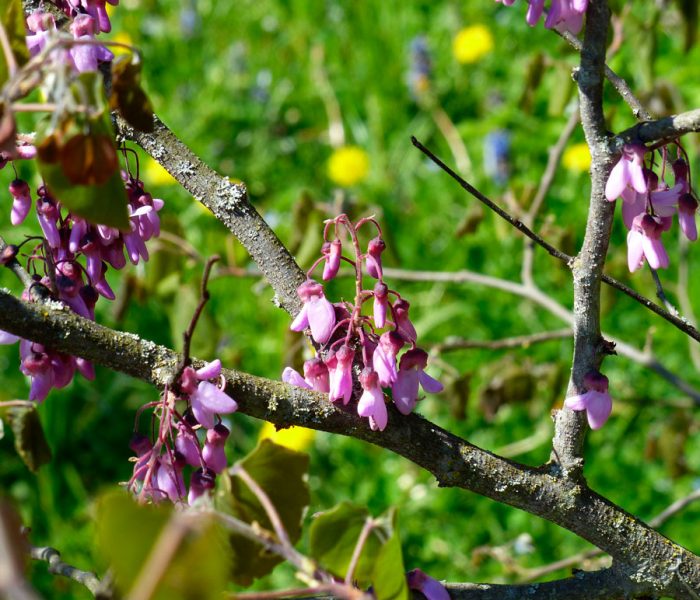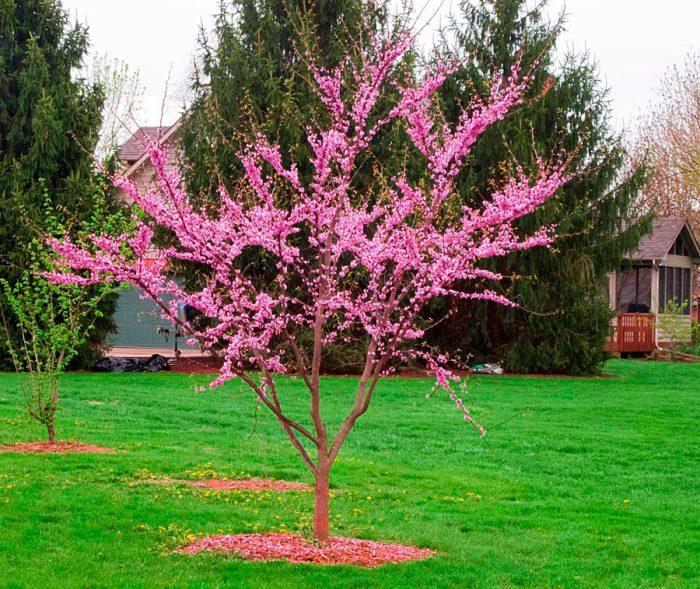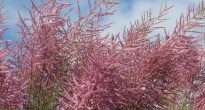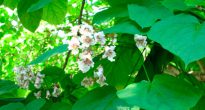The cercis plant is a short tree or shrub that has a lush spring bloom. This spectacular tree is a great addition to any garden. Among the people, it is also called the crimson and the Judas tree.
Content
Features of cercis
Cercis is part of the legume family, and in nature it can be found in North America, China, and also in the western and eastern regions of the Mediterranean. Experts managed to find 7 species of this plant, differing in height, structure, flower color and winter hardiness.
The lifespan of this perennial varies from 50 to 70 years, and its height, as a rule, does not exceed 18 meters. In autumn, all the leaves fly from both shrubs and trees. The trunk and old branches are covered with brownish-black bark with small cracks. The bark of young branches is gray or brownish-olive. In the first year of growth, the branches are smooth and have a pale red tint.
The edge of simple ovoid leaf plates is even, and the veins are embossed. They grow alternately in a spiral and have petioles. There are also small linear stipules that fly around quite early. Young leaves are colored greenish, but by mid-July they acquire a darker color.
Pink buds, from which flowers will open after a while, are formed on the branches and trunk even before the leaf plates bloom. The buds are formed in the leaf sinuses or on the surface of the bark, and they sit very tightly. The bush blooms for 30 days and fades away as soon as the leaf plates open completely. The shape of the flowers is irregular, but they are part of dense racemose inflorescences or bundles. The flower's corolla is outwardly similar to a small moth, and its calyx has a bell-shaped shape. The flower consists of a short ovary, 10 short stamens and five petals of rich purple or pink color.
When the bush fades, fruits are formed on it, which are large pods, which can reach about 100 mm in length. Each fruit contains 4–7 flat oval beans with a smooth shiny surface.
Planting and care in the open field
Seat selection and landing
Cercis in the garden grows well in shade or in a sunny area. The soil must be well-drained and alkaline, and lime must be added to it. The seedlings are immediately planted in a permanent place. At the same time, they try to plant them in the first year of growth, because their roots grow very quickly deep into the soil, and during transplantation they can be severely injured.
During the first three to four years, young trees grow extremely slowly. Moreover, in the first and second years of growth, the aerial part of the bush may dry out completely. This is a completely natural process, and you should not worry about it.
At the beginning of the fourth year of growth, the seedling in height, as a rule, reaches only 0.2 m. However, after just a couple of years, the height of the tree can already reach 1–1.5 meters.
Caring for cercis
The root system of such a tree is very developed. Within a radius, it can grow up to 8 meters, and go into the depth of the ground by 2 meters. This allows the cercis to receive all the nutrients and moisture it needs. Therefore, it is not necessary to systematically feed and water it. However, if drought and heat have been standing for a long time, then it is still better to water the tree.
Cercis is highly resistant to diseases and pests. Very rarely, aphids attack the bushes. To destroy it, use an insecticidal solution.
Reproduction methods
Cercis in the open field can be propagated by cuttings, layering and seed.
Growing from seeds
Since the beans are covered with a very dense skin, they must be scarified before sowing. Instead, they can be kept for some time in a special solution of hydrochloric acid or doused with boiling water. As a result of these actions, the strong skin will become less dense or it will be damaged, and it will be easier for the germ to break through it.
Seeds are sown not at home, but in a garden bed. From above it is covered with a thick layer of loose leaves, peat or spruce branches. If for sowing you use seeds of heat-loving varieties, then you will be able to wait for seedlings only if it is not colder than 3-5 degrees in winter.
Cuttings
Cuttings are harvested in the autumn. To do this, you need to cut off a strong shoot, the age of which is from 2 to 3 years. Make sure that all cuttings have at least two or three buds. Cuttings immediately after pruning are planted for rooting in open ground. They are buried at an angle, burying them into the soil by 10-15 centimeters. Before the frosts begin, the cuttings should already grow their roots. Thanks to this, they successfully winter in the garden. But it happens that the aerial part freezes, then in spring a young sprout grows from the root.
Layers
Basal shoots are systematically formed in an adult cercis. Take such a layer, carefully separate it from the parent tree and plant it in a permanent place. This procedure is carried out in the spring. Layers quickly take root, as they already have a formed root system.
Young plants need good care and your care, as they do not yet have the strength to withstand the harsh climate on their own. With age, matured and grown trees will become more stable.
Types of cercis with photos and names
In mid-latitudes, the most commonly grown species are Cercis European and Cercis Canadian.
Cercis European (Cercis siliquastrum)
This species is considered highly decorative. Its branches in springtime are almost entirely covered with pink flowers. This thermophilic tree is most often grown in the southern regions, because due to prolonged frost, it can die. As a rule, this species is represented by trees. But sometimes the tree grows a lot of basal shoots, and it becomes outwardly similar to a large shrub.
A mature tree can be about 10 meters high. A rather thick trunk is decorated with a spreading crown.Semicircular leaf plates turn rich yellow in the autumn months. The deep pink flowers open in early spring before foliage appears. Flowering lasts approximately 30 days.
Cercis canadensis (Cercis canadensis)
This species is highly frost-resistant, so it is most often grown in regions with colder winters. The height of a mature tree can be up to 12 meters. The front smooth surface of large heart-shaped leaf plates is colored green, and the back surface is gray. In autumn, the color of the foliage changes to yellow. The flowering of this species is less splendid than the European cercis, while its flowers are smaller and painted in a pale pink hue. During flowering, the trunk and branches of the tree are covered with lush bunches, which include from 5 to 8 flowers. This species does not bloom as early as the previous one, but it fades in the first summer weeks. Fruit ripening is observed in August, and they do not fly off the branches for a long time (while some of the fruits do not fly around for two years).
In this species, the following hybrid varieties are distinguished:
- terry;
- white.
Cercis chinensis
This species is represented by relatively tall trees that can reach 15 meters. Large leaf plates are heart-shaped. This tree loves warmth, and frosts can destroy it. During flowering in May, large, lush bunches appear on the plant, consisting of flowers of a rich pink-purple color.
Cercis griffithii
This species is represented by a tall shrub with woody stems. Its height, as a rule, does not exceed four meters. Leathery dark green leaf plates have a rounded shape. The racemose inflorescences consist of 5-7 violet-pink flowers. Such a shrub is not able to survive the mid-latitude winter.
Cercis western (Cercis occidentalis)
The crown of this frost-resistant tree is highly branched, while the leaves are painted in a deep green color. Outwardly, this species is similar to canadian cercis.
Cercis reniform (Cercis reniformis)
This thermophilic species is represented by low trees (about 10 meters) and large shrubs. Small drooping racemose inflorescences consist of deep pink flowers on short pedicels. Inflorescences can be about 100 mm long. Dark green smooth leaves have an oval shape.
Cercis racemosa (Cercis racemosa Oliv.)
In nature, the species can be found in the central part of China. This tall tree has a dark green foliage in summer and yellow in autumn. Large racemose inflorescences of purple flowers appear in spring. They can fall on short pedicels or sit tightly on the trunk and branches.
Using cercis
Cercis is planted in the park or in the garden as a solo plant. Moreover, when choosing a planting site, you need to take into account that in the future, an adult tree should have enough room for the normal development of branches and root systems. Against the background of coniferous trees, such a culture looks simply amazing. Shrub species of cercis are often used to form hedges.
This plant is considered to be an excellent honey plant. Its foliage also contains valuable flavonoids, which are used in the fight against tuberculosis.


Watch this video on YouTube

